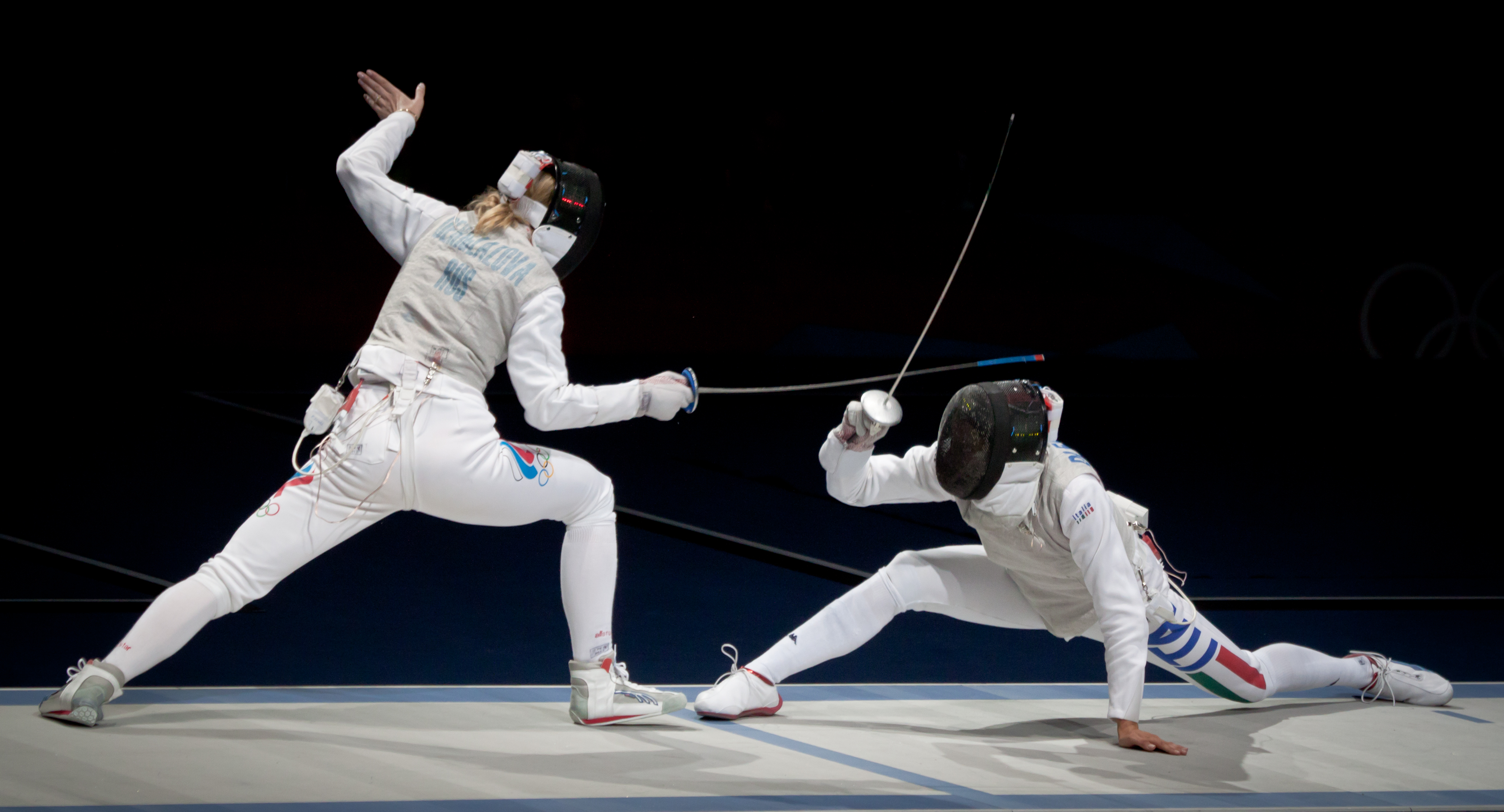People often talk about learning BJJ through the metaphor of learning a new language. In particular, the different between beginner and intermediate is characterised by the ability to form meaningful sentences (combinations and strategy) out of the words (techniques) you’ve learned.
If this is true, thus far I’ve progressed from mere baby noises to occasional word like noises — interspersed with a good deal of gabbling. BJJ has a hell of a lot of vocabulary to learn.
This is an interesting contrast to my previous combat sport, fencing. Although there are a few complicated moves in fencing, it really consists of a few basic techniques: stance, lunge, parry, circular parry, riposte, disengage, beat, envelopment, stop-cut and flèche. You learn these in the first few weeks.
Compare this with BJJ; where there are at least eight basic positions — back mount, mount, side-control, half-guard, north-south, turtle, closed guard and open guard. And then, of course, innumerable submissions, passes and sweeps from each position. It takes many months, if not years, to build up the basic vocabulary.
I don’t mean to suggest that fencing is easier or less complex than BJJ. There is endless refinement of technique and application of strategy within the basic moves. A serious competitive fencer might be doing the same basic lunge that I would, but with many times the accuracy and speed. Not to mention the depths of strategy involved in applying the basic moves at a higher level.
But the difference is vocabulary depth makes the experience of learning very different.
First, most obviously, a great deal more time and effort has to be devoted to learning new techniques.
Second, at the beginning, it’s harder to learn the techniques because you’re having to learn all the stuff adjacent to them and you have no conceptual framework to fit them into. For example, it was only on my second or third class involving a butterfly sweep that I grasped what the butterfly position was or how butterfly hooks worked. Naturally, this meant my early attempts at butterfly sweeps didn’t go well. Conversely, when a recent class focussed on a particular triangle entry, I found it more straightforward. I was just fitting a new set up onto my existing knowledge and practice. As I get more basic knowledge, I hope it will get easier to learn and apply new stuff.1 At the start though, there’s really nothing to be done but dive in and try to keep your head above water until it starts to make sense.
Third, any form of freeform sparring tends to involve flashes of understanding interspersed with periods of fog. If I’m in part of the game I know a bit about, I have some idea of what I’m supposed to try and what my opponent is probably up to. For example, from closed guard, I know a few sweeps and submissions to try — and I’m familiar with the basic guard breaks as well. I’m fairly confident in trying to do something (whether it works or not is an entirely different question).
In other positions, I often won’t know what I’m supposed to try to do or where my opponent is trying to go. I’ve found this particularly applies to any form of open guard, where I often have the sense of being in very deep water. Which grips and hooks are dangerous? Is my partner about to sweep me? Should I be moving towards them or away? Is that an opportunity to pass or a trap? It’s all still arcane. This means that I either try things in a somewhat random fashion (sometimes this works better than other times) or end up slightly frozen (which I’m trying to stop). This is getting better as I learn more. Also, as I get more of a feeling for things, I can sometimes either apply a basic principle (it’s probably not a good idea to let people get directly under your centre of gravity) or bastardise a somewhat analogous technique (this bit looks a bit like a spider-guard hook so I can probably try that thing…) But it still tends to be a relief when the roll returns to something I’m more familiar with.
Fourth, in BJJ it’s very common to ‘lose’ a technique, at least as a beginner. For example, one of my early classes covered a basic back escape — bridge into them, use two hands to move their active arm over your head, bring your shoulder down to the floor and come to your knees. But, in a recent class, when my partner took my back I tried to start by bringing my shoulder down to the floor, which obviously didn’t work. It was only when they talked me through what I should have been doing that I remembered the other steps. Again, this just doesn’t happen in fencing. You might be too slow or be fooled by opponent into doing the wrong thing, but you don’t just forget how to parry.
All of which is a long way round of cataloging the total beginner experience. But also to make the point that this extended period of basic vocabulary building is probably longer with BJJ than the vast majority of sports / activities.
I suspect this is one of the reasons that it doesn’t seem to be something anyone does casually. The need to pick up a very wide vocabulary of techniques before you even start to know what you’re doing is a significant barrier to entry. Of course, this is also why some people get sucked in — it’s a deep and fascinating art.
Photo Credit: Alex Groundwater
